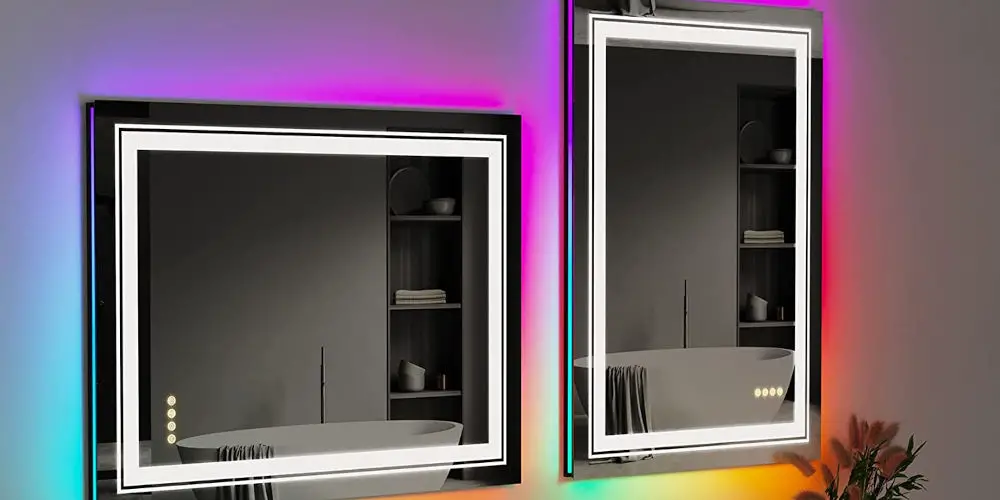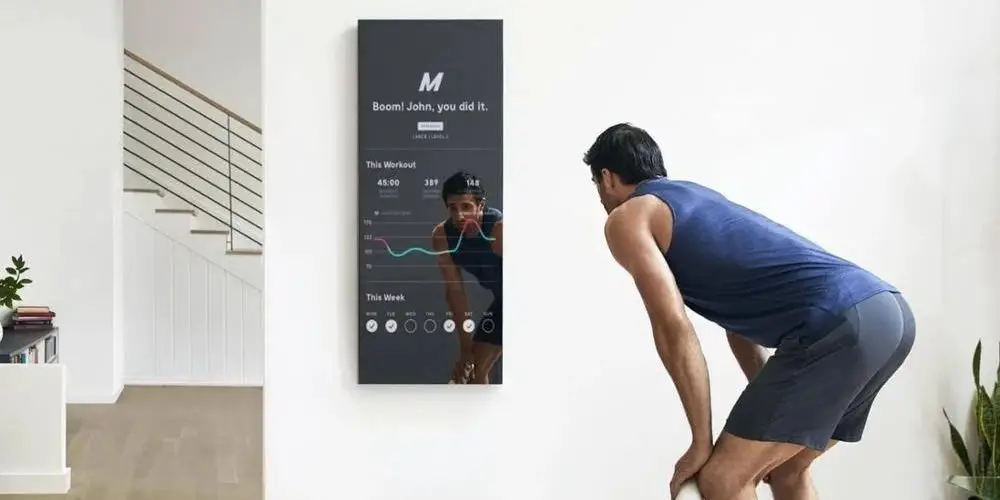What are smart mirrors?

They might sound like something straight out of a sci-fi film or remind you of the Evil Queen in Snow White, but smart mirrors are the latest piece of tech your home should have! And as far as smart appliances go, smart mirrors will help you get ready in more comfort!
While they might not speed up your morning routine, your hi-tech mirror can answer your questions and provide information while you apply makeup, shave, or brush your teeth.
Come with us as we explore the world of smart mirrors and how this tech can change your life!
What are smart mirrors?
They might seem magical but smart mirrors are just a clever piece of tech. Smart mirrors feature a digital display behind the glass and connect to your phone via Bluetooth or Wi-Fi. Using the display, you can view the date and time, daily news, weather forecasts and traffic reports.
Typically, smart mirrors have built-in LED lights, allowing you to adjust the colour and warmth to provide optimal lighting for your needs. Good news if the current lighting surrounding your mirror leaves you frustrated!
Some smart mirrors play music via Bluetooth and let you make phone calls or access the apps on your phone. Many work with Alexa or the Google Assistant.
We’ve seen a rise in smart mirrors that are designed for specific applications, from beauty to fitness. For example, the beauty-focused HiMirror provides personalized information about your skincare and makeup.
However, if fitness is more of your thing, your smart mirror can provide workout guidance right on the glass, making it ideal for a smart home gym.

photo by LUVODI
How does a smart mirror work?
It’s quite simple to understand how a smart mirror works. They consist of three components: a two-way mirror, a digital display and a computer.
Unlike standard mirrors, smart mirrors need light to pass through from behind the glass for you to view the display. So that’s why you need a two-way mirror. And it’s similar to what you’d find in a police station!
Behind the glass, there’s a built-in digital display (a monitor screen or tablet) powered by an internal computer. The computer connects to your home’s wireless network or your phone via Bluetooth, allowing it to display real-time information from the Internet.
What can you use one for?
You can easily display any information on your smart mirror, including the local weather forecasts, news bulletins, your upcoming calendar schedule, social media feeds, etc.
Also, you can use voice commands thanks to Amazon’s Alexa or the Google Assistant. With voice commands, you can ask your mirror questions, set reminders, or control other smart devices in your home.
Designed to be easily customised, smart mirrors can include whatever information you want. Many people taking a DIY approach and creating custom modules and code to get smart mirrors to do different things.
Basic features of a smart mirror
There’s no standard smart mirror, each brand offers something slightly different. Plus, if you’re exploring building your own, you can customise it to your needs.
Here are a few features your smart mirror could include:
- Touch screen: for greater interaction
- LED lighting: add some nice ambience to your room
- Motion sensor: turn your smart mirror on automatically when you enter your room
- Voice control: ask your mirror questions or give it commands
- Facial recognition: detecting who is in the room and customising the content to match each person.

photo via AliExpress
What will a smart mirror cost?
Traditional mirrors are highly affordable with many options costing less than £100. Sadly, smart mirrors cost significantly more due to the technology inside them.
For example, online retailer mysmartmirror offers their Miralite Connect 60 for £349. Another option is to pick from the Artforma range, which costs between £865 and £1,335. Within this price range, a few other options exist, but they are few and far between.
Should you DIY a smart mirror?
While it may sound complicated, building a smart mirror is actually very simple. Depending on the features you want your smart mirror to have, you could build one in a weekend, or it might take several weeks.
If you want to go down the DIY route, it’s worth starting with a list of features you’d like. Next plan where it’ll go and what connections and technology you’ll need. Finally, you’ll want to create your smart mirror and mount it in place.




